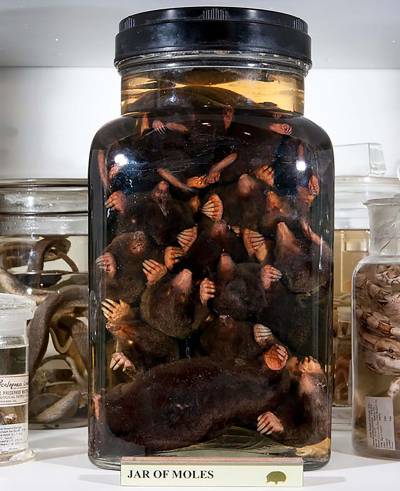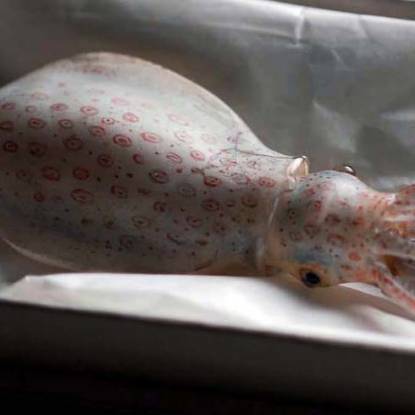Jar of Moles
This is one of the Museum’s most popular objects, although most visitors wonder why eighteen moles would be packed so tightly into a single jar. There are several jars containing multiple specimens in the Museum, and there are a number of reasons why they might be prepared like this.
First, it is an efficient way of storing a large number of specimens. Glass jars, preservation fluid and storage space is expensive, and by storing several specimens together it cuts costs, and makes transporting them easier. Other reasons relate to the original purpose of the Museum – for teaching and research in zoology and comparative anatomy, which historically included animal dissection. It is possible that the moles were once intended to be used for dissection by students of an anatomy class – one mole for each student.
Alternatively they may have belonged to a researcher studying the anatomy of moles. To perform a comprehensive study several specimens would have been required, and they were all stored together.

The moles are specimens of the European mole, Talpa europaea, which is found in Britain and Europe, as far east as Russia. They inhabit deciduous woodland, grassland and farmland, wherever soil is deep enough to dig tunnels.
Moles are impressive diggers and can tunnel through 20m of earth in a day. The well known mounds of earth that are piled up on the surface are formed as they excavate. The tunnels comprise large chambers lined with dry grass and connected by passageways. These chambers are used for nesting. Moles are perfectly adapted for their underground, tunnelling lifestyle. They have evolved elongate, cylindrical bodies, muscular shoulders and spade-shaped forefeet specially adapted for digging. They are active both day and night.
The mole’s diet consists mainly of earthworms, but they will feast upon any subterranean invertebrates that drop into its tunnels. When foraging above ground, they will also eat snakes and lizards.
Read more about the Moles in our Specimen of the Week blog post and check out an interview with the Jar of Moles.
Although structurally, the moles eyes are complete, they are minute and largely hidden within the fur. The eyes are sensitive to light change but have very little visual acuity. They also have no external ears and mainly rely upon projections called Eimer’s organs on its muzzle and sensory whiskers on its appendages to detect intruders entering its tunnel system.
 Close
Close



